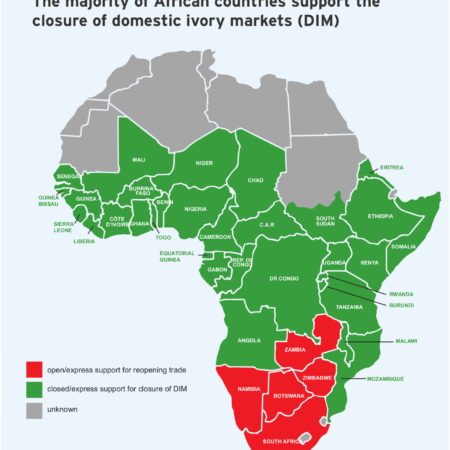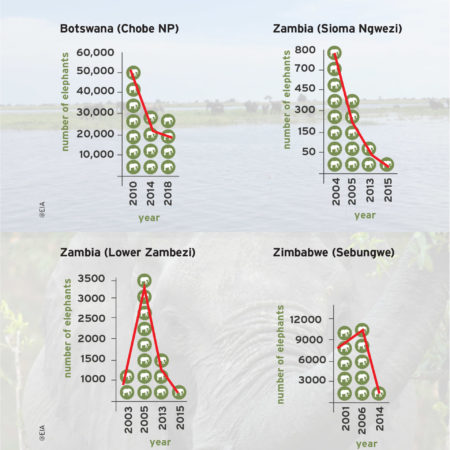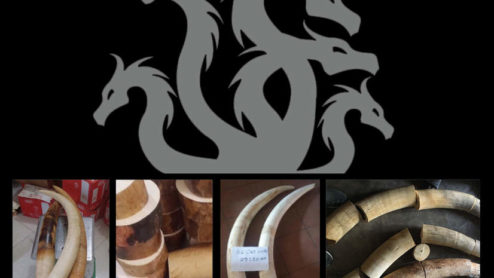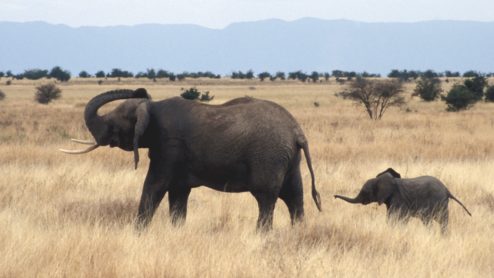Eyes wide shut: Southern Africa’s elephants now in the firing line
Contrary to what the governments of Botswana, Namibia, South Africa, Zambia and Zimbabwe have suggested ahead of the 18th Conference of the Parties to CITES, poaching and ivory trafficking continue to pose a very real threat to elephant populations in Southern Africa. Strong measures are needed at CoP18 this month in Geneva to ensure that the situation does not spiral out of control. A new factsheet produced by EIA, Eyes Wide Shut: Southern Africa’s Elephants Now in the Firing Line, highlights the threats facing Southern Africa’s elephants.
Botswana, Namibia, Zambia and Zimbabwe have submitted two proposals to decrease elephant protection and restart the international ivory trade – a practice we had hoped would never be repeated after we saw the repercussions on elephants the last time such a trade took place in 2008. Botswana, Namibia and Zimbabwe have submitted a proposal (CITES CoP18 Prop. 11) which would allow them and South Africa to sell their stockpiles of ivory. Zambia has submitted another proposal (CITES CoP18 Prop. 10) to decrease the protection of its elephant population under CITES, also with a view to selling its ivory stockpile. EIA calls on world governments attending the upcoming 18th CITES Conference of the Parties (CoP18) to reject these proposals and to ensure that decision-making at CoP18 either increases or maintains existing protective measures for elephants under CITES.






